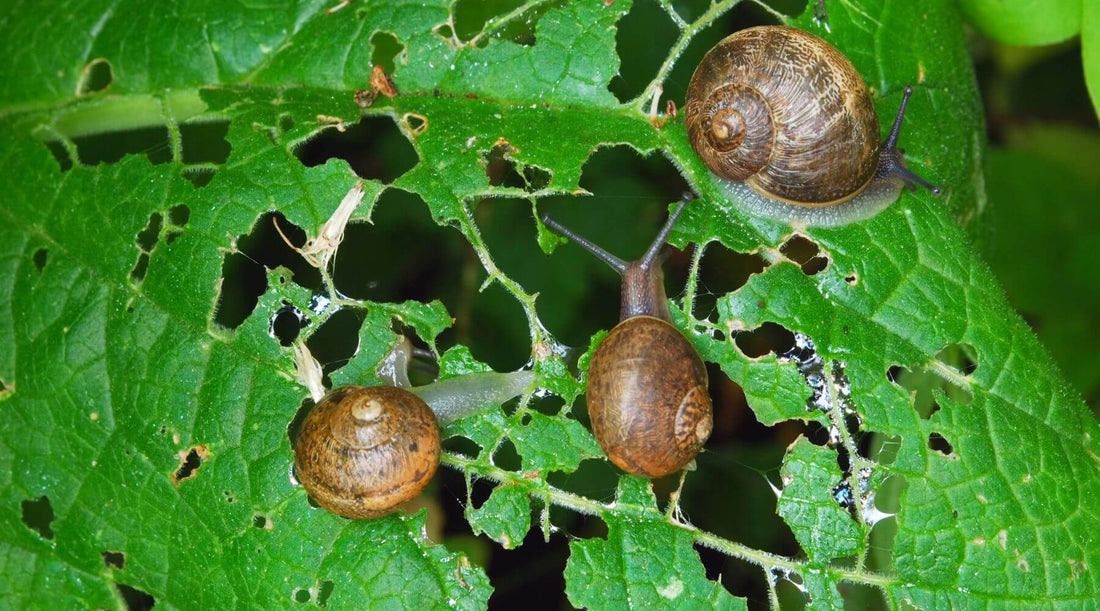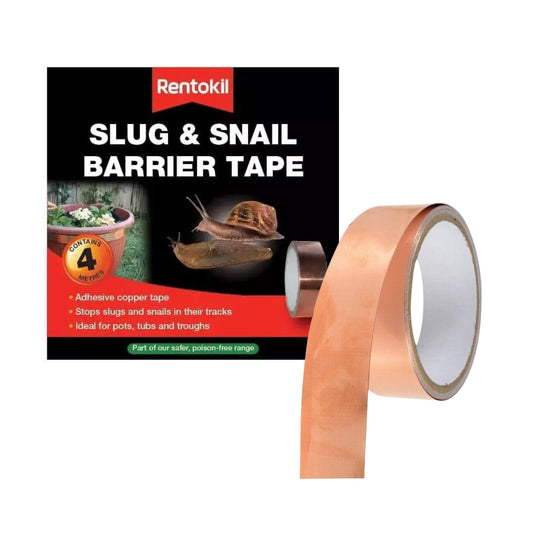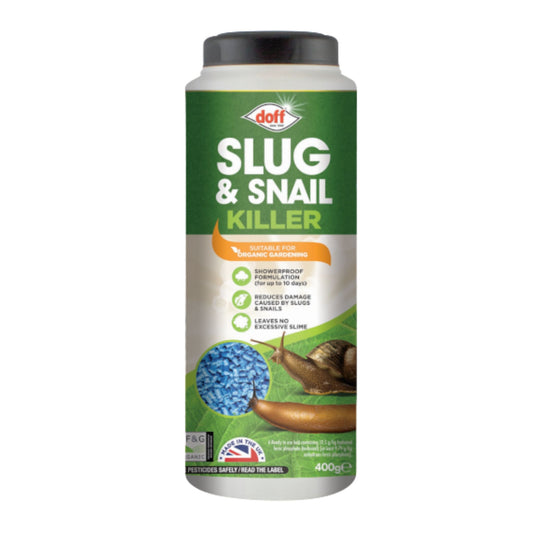
Expert Guide on How to Get Rid of Snails Yourself
Share
The UK's damp climate is ideal for snails. And while the slimy invaders don't pose a threat to human health, they can be very destructive when it comes to plants. Gardeners know what a nuisance snails can be.
So how do you get rid of them? Let's take a look at the world of snails to find out how you can protect your plants in your garden from these pests.
What are Snails?
Snails are soft-bodied molluscs with a hard, spiral shell. The most common garden species in the UK is the common garden snail (Cornu aspersum), which thrives in damp, shady environments. Snails are most active during the night or after rain because they need moisture to avoid drying out.
Snails move using a muscular "foot" that glides on a layer of mucus, leaving behind a shiny, silvery trail. These trails are unsightly, especially when there are lots of them in your garden.
Snails feed on decaying organic matter and living plant tissue. That means they have an important role in nature when it comes to breaking down dead plants, but snails don't need your plants to be rotting to eat them. Also, snails reproduce rapidly, laying clusters of round, white eggs in moist soil. In warm, damp conditions, a single snail can lay hundreds of eggs per year, quickly turning a small problem into a major infestation.

What Damage do Snails do?
Snails are particularly damaging to young and fragile plants. They feed by scraping and chewing, leaving irregular holes in leaves, stems, and even flowers. Signs of snail damage include:
- Large, ragged holes in leaves or seedlings.
- Shiny mucus trails on soil, pots, and leaves.
- Missing young shoots or new growth.
- Chewed fruit or vegetables, especially strawberries, lettuce, and courgettes.
Snails can destroy seedlings overnight, making it difficult for new plants to establish. Unlike some pests that target specific crops, snails are generalist feeders. This means nearly every plant in your garden can be attacked.
They also tend to hide during the day, making them hard to spot. You'll often only realise they're a problem when the damage is already done.

How to Get Rid of Snails
Tackling snails in your garden needs persistence. These pests can be stubborn, so you may need to combine several approaches to get rid of them.
Remove Hiding Spots
Snails love cool, dark, and moist places. Start by:
- Clearing away dense ground cover, fallen leaves, and plant debris.
- Looking under pots, stones, and planks where snails may shelter.
- Raising plant pots off the ground and trimming low-hanging foliage.
By reducing their hiding spots, you make your garden less appealing.
Use Barriers and Traps
Snails hate crossing certain surfaces. Try:
- Copper tape: Attach to pots and raised beds. The metal reacts with their slime, creating a mild electric shock.
- Crushed eggshells or grit: Scatter around plants to create an uncomfortable barrier
- Beer traps: Bury shallow containers filled with beer at soil level. Snails are drawn in and drown.
- Salt: Ordinary table salt can create a barrier snails don't want to cross, as it dries out their slime.

Introduce Natural Predators
Encourage wildlife that feeds on snails:
- Frogs, toads, and hedgehogs all eat snails.
- Provide shelter like log piles or a small pond to attract them.
- Avoid using pesticides that could harm these helpful creatures.
Some gardeners also use nematodes (microscopic worms) which are applied to the soil and attack snail eggs.
Use Pellets or Repellents
- Choose ferric phosphate-based pellets - safer for children, pets, and birds.
- Avoid metaldehyde, which is toxic to other animals.
- Use sparingly and according to the manufacturer's instructions.

Dealing With Snails
Snails have a place in the ecosystem of your garden. They provide food for small predators and help to break down decaying plants and other organic matter so that it decomposes more quickly.
However, they don't know the difference between dead plants they should eat and growing ones they should stay away from. That means they can cause a lot of damage to your garden.
Snails can be very persistent, and getting rid of them often requires several different techniques. You may need to use repellents, reduce moisture in your garden, and plant snail-resistant plants to keep them in check. Using a variety of methods can help you protect your property so that your plants can grow to their full potential and you can avoid slimy snail trails all over your property.
At PestBuddy, we're here to empower you with effective, fast and easy-to-use DIY snail control products. Explore our range of products to take control of your pest problems with confidence.




